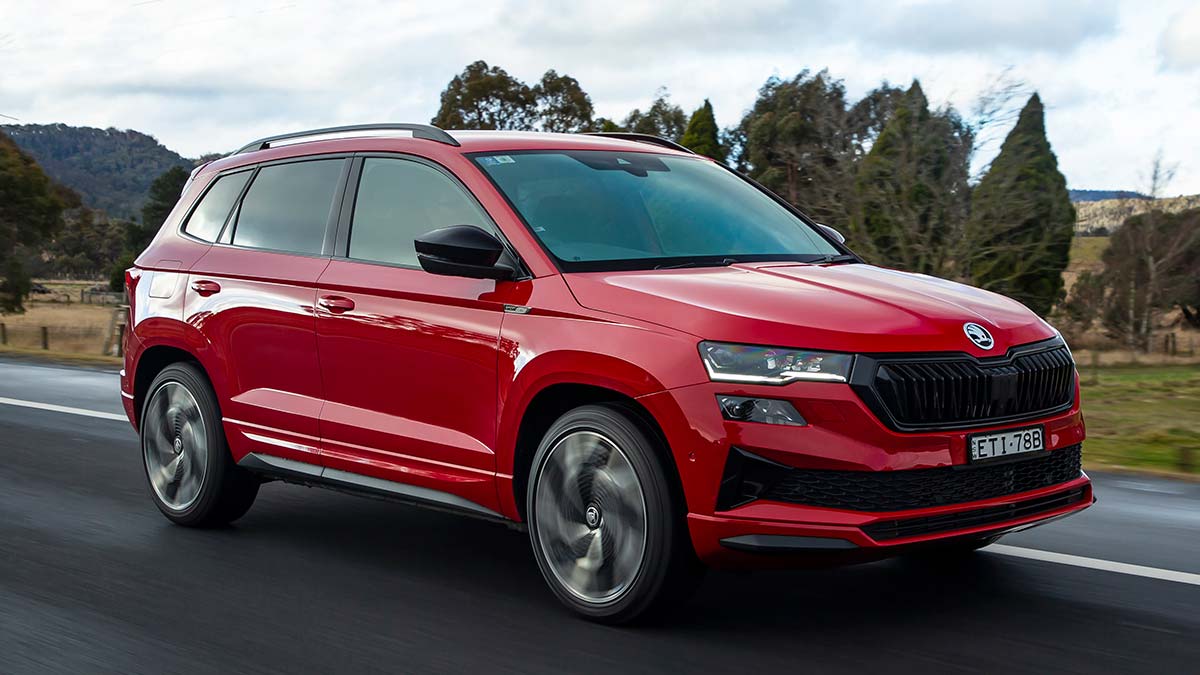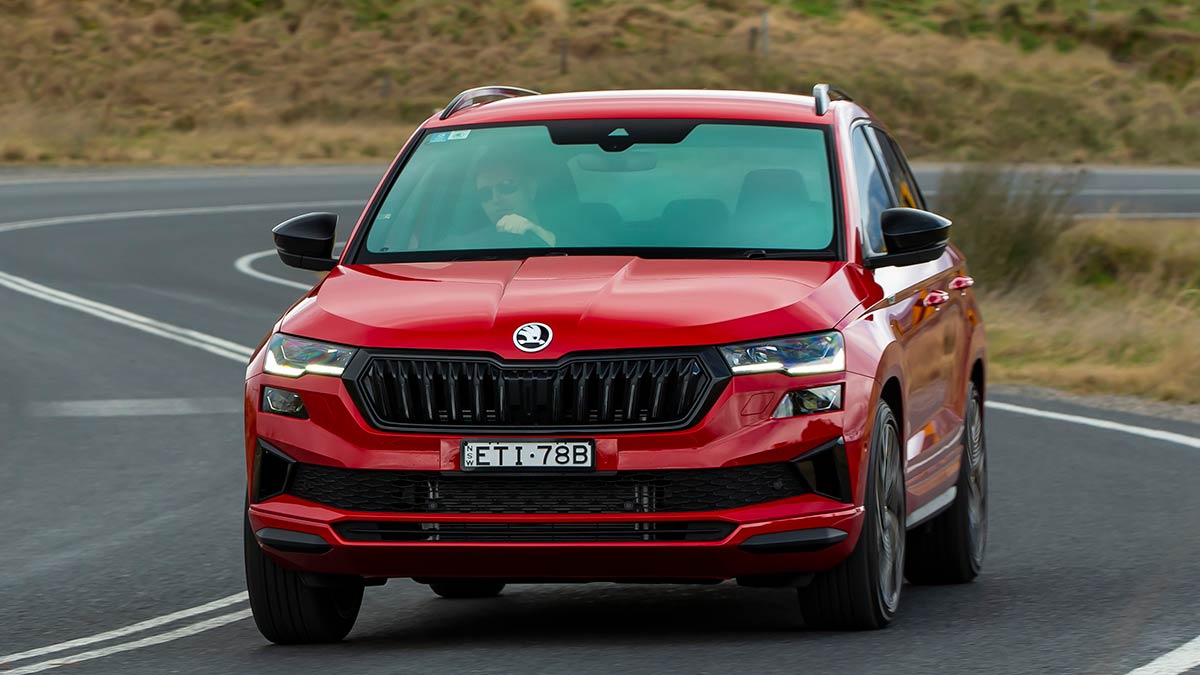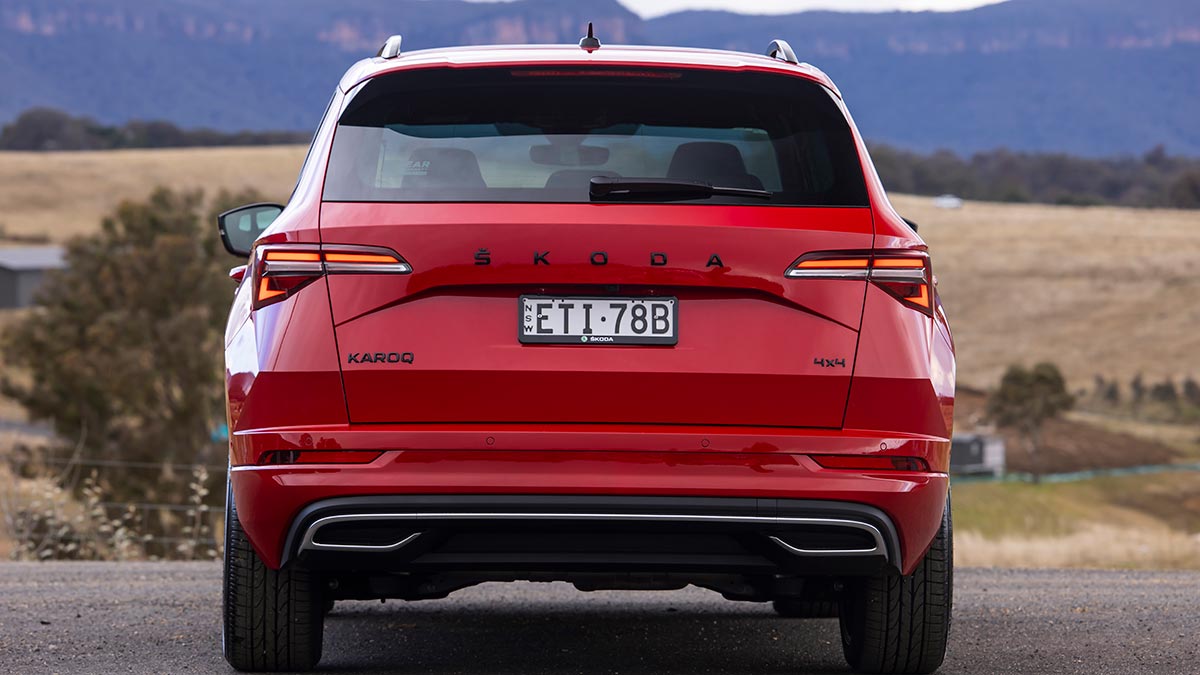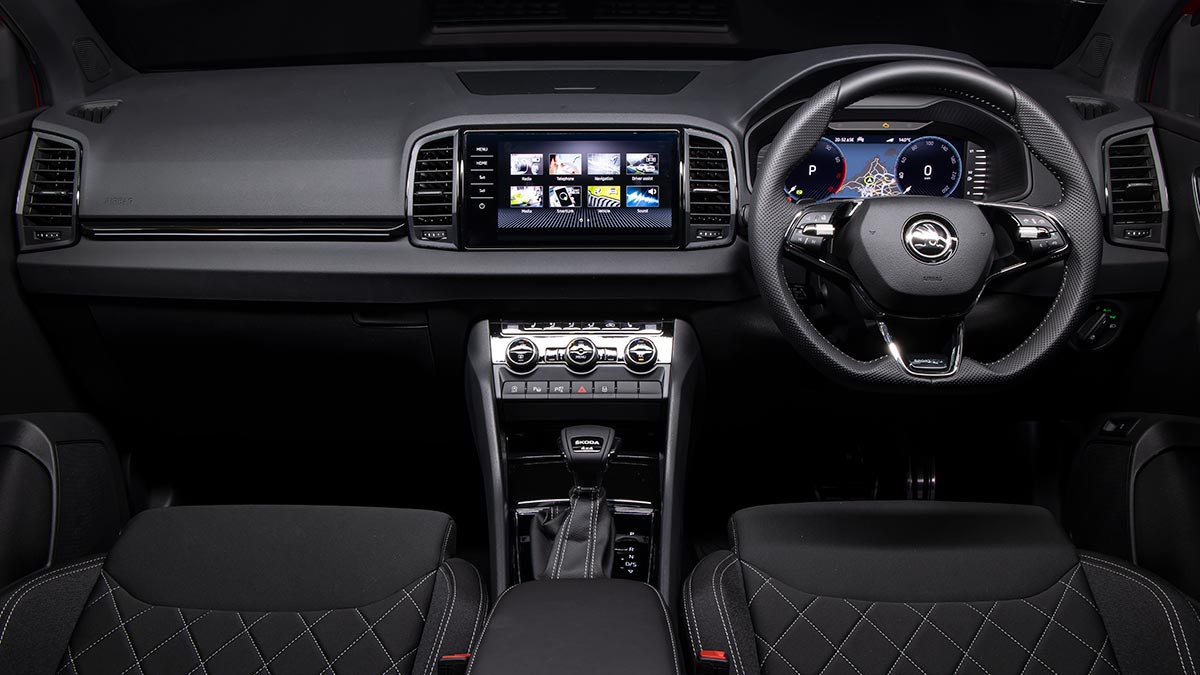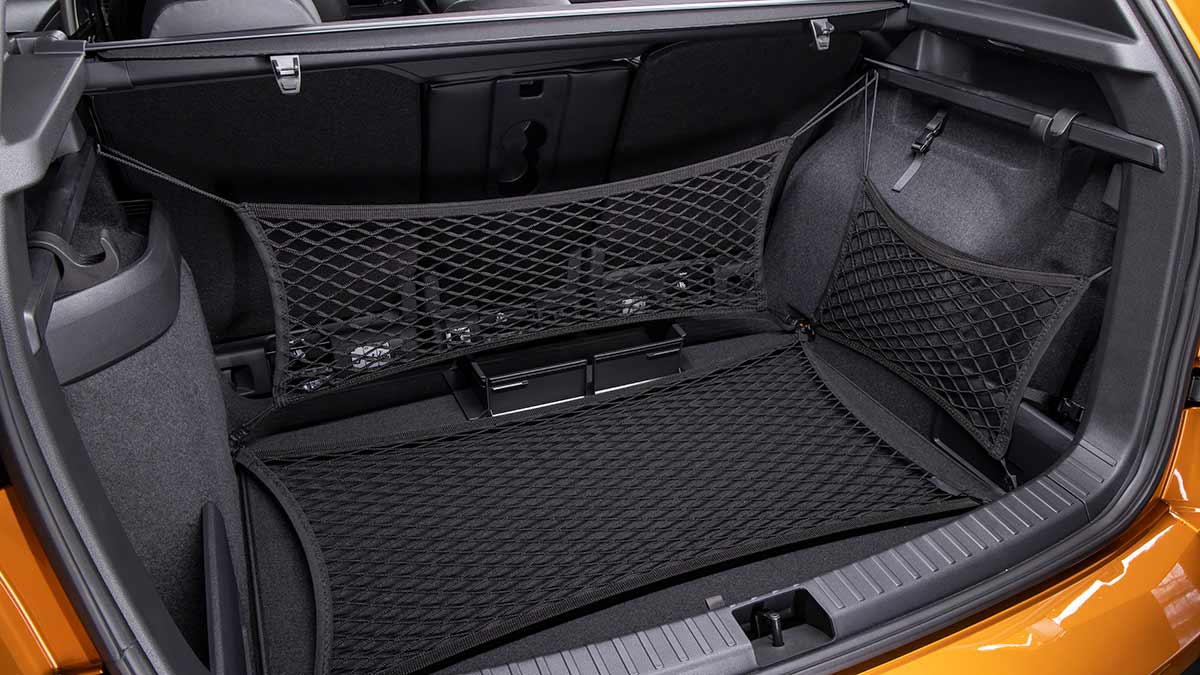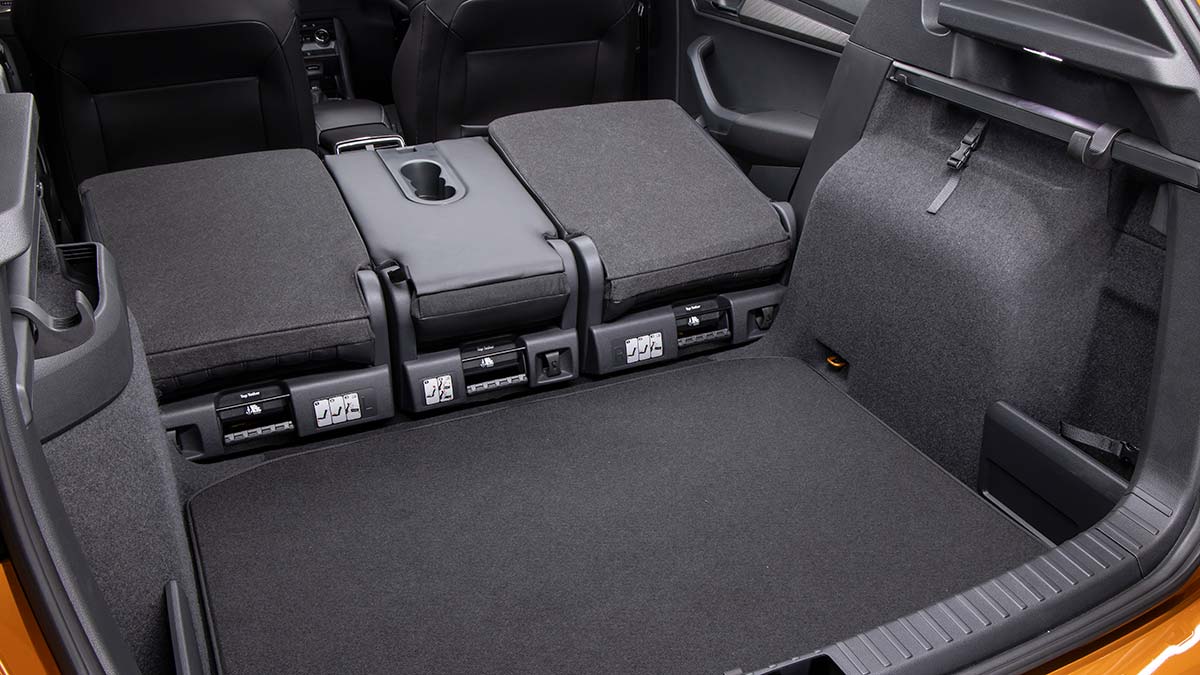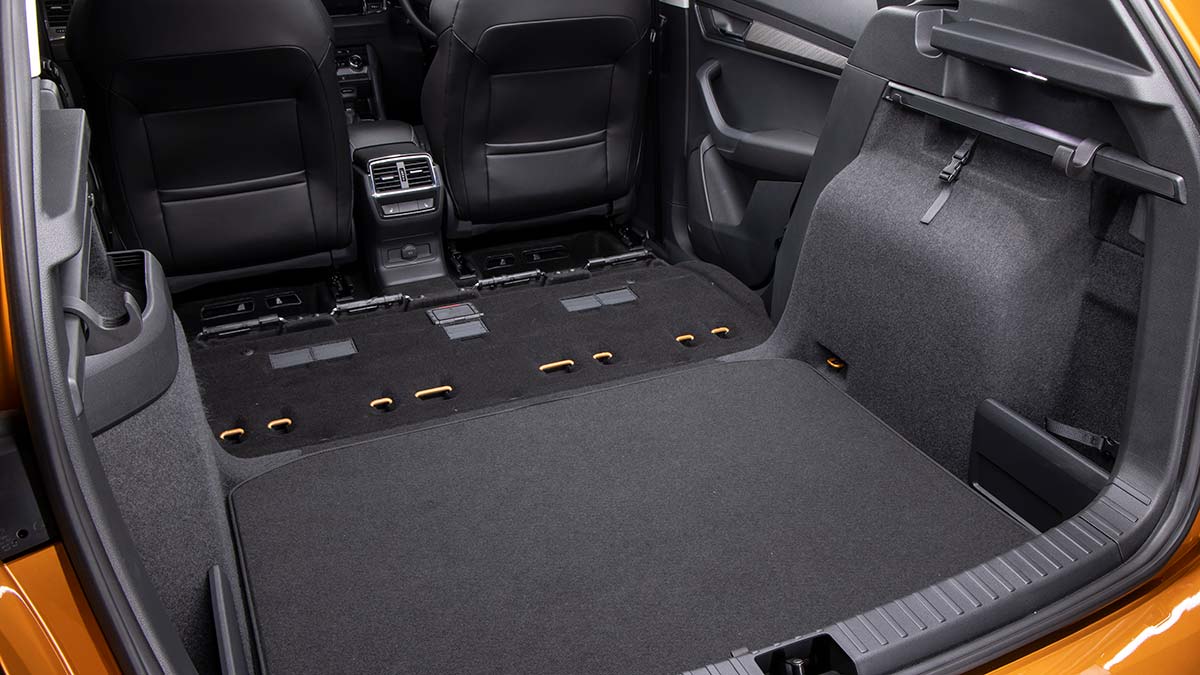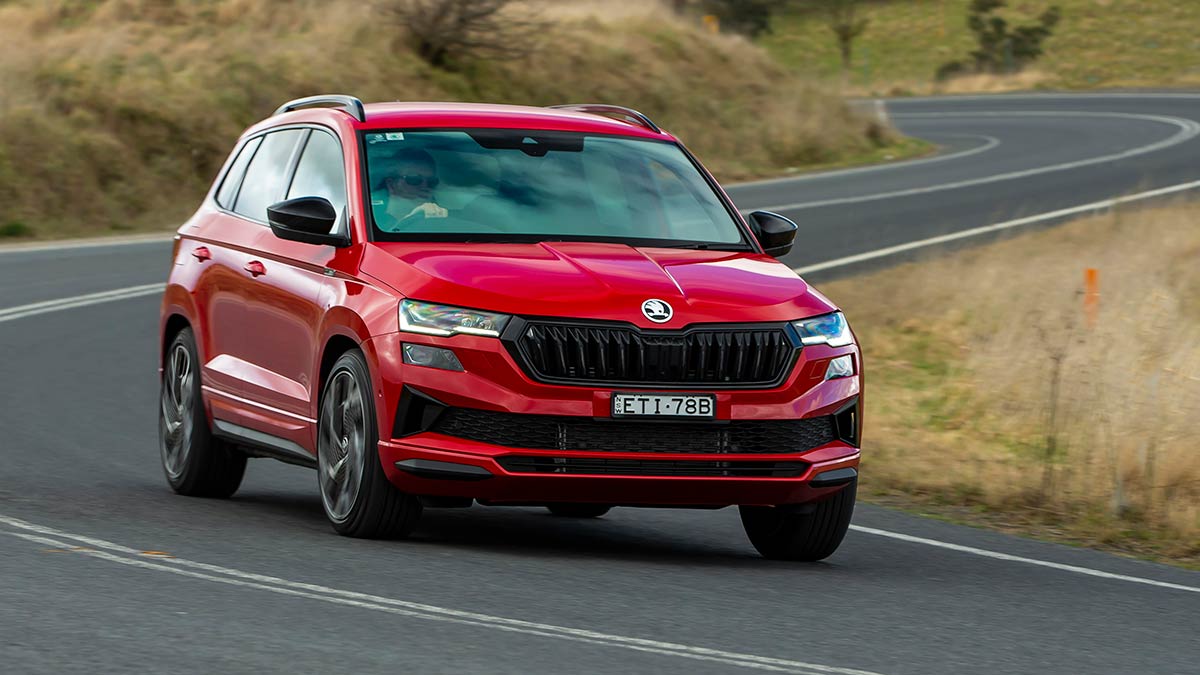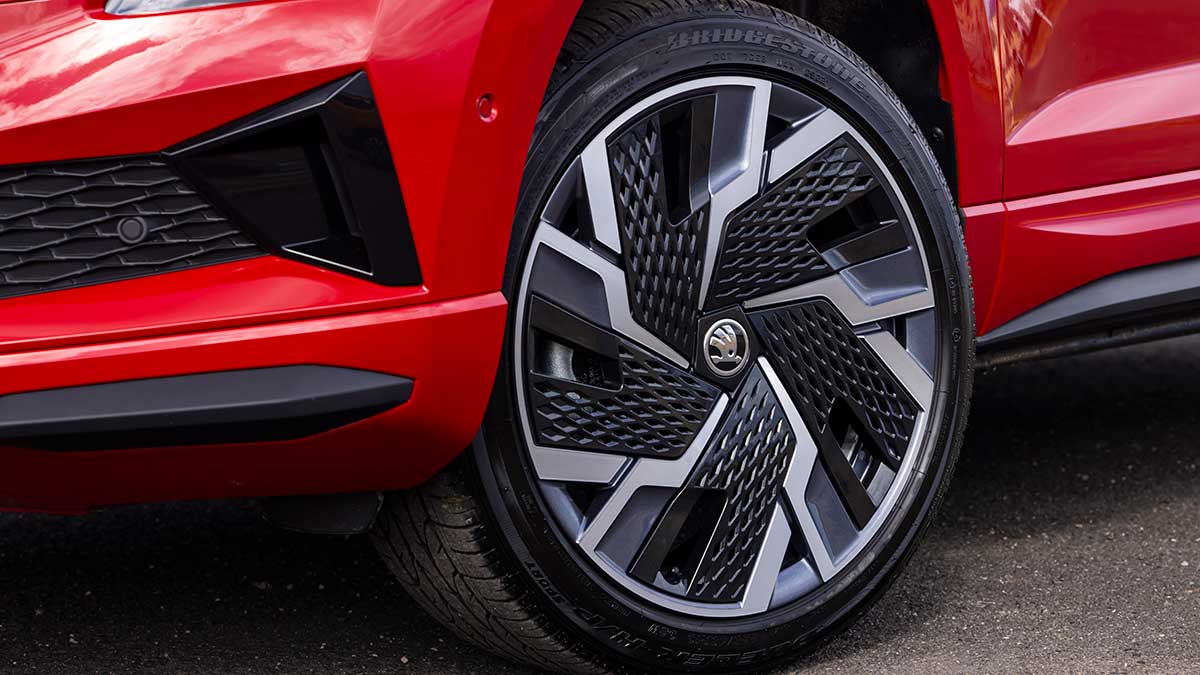The ninth-generation Toyota HiLux has arrived, bringing with it a futuristic forward exterior design, more safety and tech and the same rugged capability owners love. Will the updates tempt private buyers away from the Ford Ranger or are they just enough to keep fleets onside?
Great expectations: 2022 Skoda Karoq first drive review

Skoda is more than happy to sate the appetite of Australians who have developed a sophisticated taste for upmarket mid-sized SUVs.
The Skoda Karoq, a mid-sized SUV, has enjoyed 5,000 sales since it launched in Australia in 2018. The revised model has seen an injection of previously optional equipment, backed by a commensurate rise in price.
Skoda director, Michael Irmer, says it is a reflection of prospective owners wanting value for money rather than the cheapest price.
“When we started (in Australia) we often had lowly-equipped, lowly-priced entry cars. The lower grades had small engines, small wheels… and nobody wanted them,” Irmer said.
“Content counts more than the lower sticker price in this market, at least for us and our clientele.”
On this page
- How much does the Skoda Karoq cost?
- Is the Skoda Karoq safe?
- What's the Skoda Karoq like inside?
- What's under the Skoda Karoq's bonnet?
- Is the Skoda Karoq efficient?
- How does the Skoda Karoq drive?
- Should I buy one?
 How much does the Skoda Karoq cost?
How much does the Skoda Karoq cost?
Parking a Skoda Karoq Style in your garage is a $42,990 proposition. That is $3,000 dearer than the previous generation, which is a fair jump.
Skoda says the new Karoq Style justifies the hike by adding the likes of LED headlamps, larger, 18-inch alloy wheels, wireless phone charging, front parking sensors, digital radio … the list goes on. According to Skoda, the added features amount to $4,500 if they were purchased individually (and many of them were on the previous car).
The move to the more powerful Skoda Karoq SportLine will cost $49,990 driveaway, which is also $3,000 up on the earlier version.
There are a pair of option packs for each version. Skoda Karoq Style owners can choose from the “Tech Pack” with an upgraded 9.2-inch infotainment system, an emergency assist call function, matrix LED headlamps (standard on the SportLine), automated parking, blind-spot assist, stop-and-go adaptive cruise control, ambient lighting and a surround view camera for $5,900.
Then there’s a $10,900 “Premium Pack” that includes the all the previous pack gear, along with leather-highlighted upholstery, powered front seats with memory settings, heated seats front and rear, auto-folding side mirrors with auto-dimming, heated leather steering wheel, steering-wheel paddles, a heat-insulating windscreen and headlamp washers.
It will be fascinating to see how many buyers bundle that pack and add 25 per cent to the cost of their car.
SportLine buyers have the option of a $3,200 “Leather Seat Pack” that adds leather upholstery, powered front seats and auto-folding/auto-dimming side mirrors, or a “Premium Pack” for $5,900 that includes heated front and rear seats, a heated leather steering wheel with paddle-shifters, a bigger and better infotainment system, automated parking, adaptive chassis control, blind-spot assist, stop-and-go adaptive cruise, heat-insulating windscreen, emergency assist, headlamp washers and a surround-view camera.
The Skoda Karoq is covered by a five-year, unlimited kilometre warranty. Pre-paid service packs cost $1,550 for five years or $2,400 for seven.
Rivals include the Toyota RAV4 with a starting driveaway price of $38,779 in Melbourne for prospective GX owners, the Mazda CX-5 Maxx automatic at $38,710 driveaway and the Kia Sportage S automatic at $38,925.
Is the Skoda Karoq safe?
As a facelifted model, the Skoda Karoq inherits the five-star ANCAP rating bestowed upon it in 2017.
The safety body awarded the vehicle 93 per cent for adult occupant protection, 79 per cent for child occupant protection, 73 per cent for vulnerable road users and 58 per cent for safety assist systems.
Buyers should be aware the 2022 versions upgrade many of the safety assist system features, including a lane-assist feature which was notably absent on the previous vehicle and cost it points in the ANCAP assessment.
Seven airbags are standard fit to protect the occupants should a crash occur.
What’s the Skoda Karoq like inside?
Skoda has to tread a fine line between Euro-style and affordability. In other words, it has to look classy without encroaching on parent company Volkswagen’s territory, which is the Tiguan in this case.
As a result, the styling is classy but bereft of the soft-touch plastics on the top of the door trims and dash that are common on other vehicles in the mid-sized SUV segment
The standard 8.0-inch infotainment display is intuitive and the resolution is good. Smartphone connectivity is standard and the default eight-speaker stereo is up to the job.
The Style version has what Skoda terms “Varioflex” rear seats, meaning they can lay flat, be tumbled forward or removed altogether. It is a feature limited to the entry model, as the SportLine’s all-wheel-drive layout means the driveshaft tunnel doesn’t permit that much manoeuvrability.
Seating space front and rear is good and the cargo capacity, with the rear seats slid into their forward position, (which will limit adult legroom) is 588 litres for the Skoda Karoq Style and 522 litres for the SportLine.
What’s under the Skoda Karoq’s bonnet?
The Skoda Karoq Style adopts a 1.4-litre four-cylinder turbocharged petrol engine good for 110kW and 250Nm.
Power is delivered to the front wheels using an eight-speed automatic transmission.
The package is fine for urban duties, but the lack of outright performance is obvious when accelerating when 80-110km.
That’s evidenced by the 9.2-second run to 100km/h; not a slouch but no performer either.
Buy the Karoq SportLine and the engine capacity grows to 2.0-litres delivering 140kW/320Nm. It sends drive to all four wheels using a seven-speed dual-clutch transmission and transforms the Karoq into a more-than-competent performer.
A 100km/h time of seven second flat is more than enough for the average family SUV.
Is the Skoda Karoq efficient?
Skoda quotes a combined fuel use of 6.5 litres every 100km for the Karoq Style and 6.6 litres/100km for the SportLine. In both cases, that requires owners to be buying 95 RON fuel.
Around town, fuel consumption in the Style climbs to a claimed 7.8 litres/100km or 8.3 litres/100km in the SportLine.
The fuel tank is 50 litres in the Style and 55 litres in the SportLine, giving a range of around 600km in typical city use (depending on how hard and how often you depress the accelerator) before you’ll need to start searching for a service station.
What’s the Skoda Karoq like to drive?
Fit for purpose is an apt description of the Skoda Karoq.
It fulfills the brief as a well-suspended family runabout. It isn’t intended to be a sports SUV, so the tyres (50mm deep on the Style and 45mm thick on the SportLine) aren’t liquorice strips and absorb the initial jostle from road joins before inviting the suspension to join in.
Once that does happen, the response is steadily progressive, meaning the Skoda Karoq handles typical lumps and bumps at regular speeds with finesse.
Step up the pace on a country road and it will also cope with most potholes without unduly perturbing the occupants. That compliance comes at the cost of a bit of body roll around corners. Again, it is a more than acceptable trade-off for keeping the kids happy.
The steering is light on centre feel, but progressively weights up as the driver engages more lock.
Acceleration in all situations is good for the SportLine and I’d recommend drivers consider it, rather than the Style with the Premium Pack.
Should I buy one?
The Skoda cedes ground to the Mazda in terms of interior and exterior styling, but the CX-5 can’t match the Karoq for interior space despite having a bigger body.
If the buying proposition is based on an affordable, family-friendly vehicle, the Skoda Karoq is a contender, though it's worth cross-shopping it against the Hyundai Tucson and Kia Sportage before signing up.
The Toyota RAV4 is another to consider… provided you’re prepared to wait for delivery.
The information provided is general advice only. Before making any decisions please consider your own circumstances and the Product Disclosure Statement and Target Market Determinations. For copies, visit racv.com.au. As distributor, RACV Insurance Services Pty Ltd AFS Licence No. 230039 receives commission for each policy sold or renewed. Product(s) issued by Insurance Manufacturers of Australia ABN 93 004 208 084 AFS Licence No. 227678.
